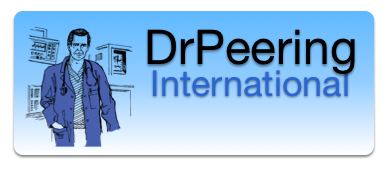Foreword to the Second Edition
Every day, billions of emails reach inboxes, millions of movies are streamed, and countless websites are accessed. All of this Internet-based activity happens seamlessly – most of the time – thanks to people who work out the network details behind the scenes.
After working in this industry for nearly 20 years, I’ve found that getting these network details figured out often requires going to a series of conferences around the world. These conferences represent the old-school telcos, modern Internet Service Providers (ISPs), Content Delivery Networks (CDNs), web properties, and various networks that are hard to define, as well as other assorted companies. Each of these entities needs to know each other in order to best engineer and route their own companies’ traffic. That is why they go to these conferences. In short, Internet networking centers around people networking, and few people understand this as well as Bill Norton.
My first foray into Internet conferencing began in 1998. It was in Dearborn, Michigan, and the conference was the North American Network Operators Group (NANOG), a USA-based conference for discussing networking and peering, which was then just beginning. The very first person I met was Bill Norton, who was then the chairman of NANOG. I walked into the conference hotel, ready to conquer the world, and he asked me to help him carry some boxes. How could I refuse? He introduced himself and I was immediately intrigued and wondered if everyone at this conference was going to be so outgoing and friendly. Of course they weren’t; this is an industry of introverts where the rare extrovert stands out.
Bill helped to develop the thrice yearly NANOG conferences into “must go” events, not only for the expert panels, but for the networking opportunities. When the Internet was still in its infancy, peering representatives from companies (whose main job was network engineering) would set up meetings with each other to discuss whether and where they might be able to connect networks in order to establish the best flow of Internet traffic across all of North America. Internet end-users might not realize this, but often the size and speed of a network was dependent on whether two representatives got along well enough to agree on peering arrangements. Hint: We didn’t always!
But these regularly scheduled meetings of industry experts also allowed everyone to learn from each other. We discussed what worked, what didn’t, whose network was slow, and debated potential scenarios. We also discussed who was working where, the location of the best brew pub, where to find the best food in any particular city, along with other tantalizing gossip. Since this book is about peering, perhaps Bill will tackle those issues in his next tome.
During his meetings with industry experts, Bill listened, learned, and gathered the information that served as the basis for the first resource guide to Internet peering and transit. He tirelessly filled up notebook after notebook with drawings and facts gleaned from interviews with leading experts. He asked all sorts of questions and hosted debates ranging from “public vs. private peering” to “open vs. restrictive peering.” And whether you agreed with him or not, you always came away with a variety of perspectives on the issues.
This is the kind of approach Bill took in developing this book. This book builds upon his initial research, where he outlined how to set up peering, defined restrictive, selective, and open networks, and explained the makeup of the peering ecosystem. Today, when developing networks move ahead with peering and transit arrangements and consider various technical issues, they often consult the set of tools – and lessons learned – laid out in Bill’s book.
It wasn’t simply his gregarious and professorial nature that led Bill to write this book. After chairing NANOG for a number of years, he then headed to Equinix, where he became the company’s global evangelist for peering, as well as the interconnections that could result from peering. As a co-founder, Bill was the visible face of Equinix and traveled endlessly promoting his company and better understanding Equinix’s role in the global Internet Ecosystem (a term he first coined). It’s not surprising, then, that Equinix grew to become the biggest colocation company in the world and the dominant player in that business.
Fast forward 15 years, and Bill is still on the cutting edge of the Internet, this time in his role as an educator, expert, and as a great resource to bounce ideas off of. He is perfectly poised to educate and inform new networks and countries on how they are best able to benefit from the lessons learned from “mature networks.”
I look back to that first introduction in 1998. That introduction to Bill pretty much set the tone for our 15-year friendship, a friendship that has included dozens of cities, countries, a few weddings and some golf. Bill is an extrovert in a world of introverts. He is a collector of information in a room full of experts. He has remained neutral and diplomatic in so many public and private situations I can’t count them all. He is brutally honest, helpful to a fault, and would give you the blue Oxford shirt off his back (he must have 50 of them) if you needed it.
In that time, there has not been anyone more diligent and qualified to document exactly what this whole peering/transit thing is about.
You, the reader, are in for a treat. You are getting a “peek” into the hundreds of interviews and discussions that Bill has led. I hope you enjoy this as much as I did.
Peter Cohen
August 2012

